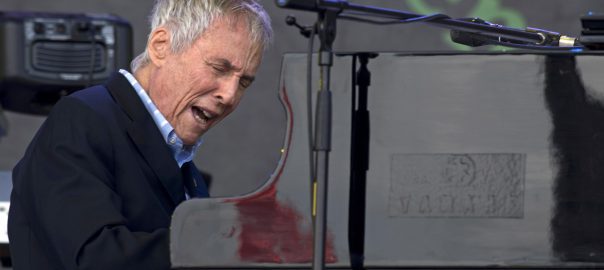Stephen Downes, Royal Holloway University of London
American composer Burt Bacharach, who has died at the age of 94, is arguably one the greatest songwriters of all time. With hits going back to the 1950s, Bacharach continued working until the age of 92.
Together with lyricist Hal David, Bacharach created some of the most affecting, subtle and poignant songs of the second half of the 20th century. Within the best of them, you can hear an array of intricate characterisations, moving between the intimate and provocative, between easy listening and the more unsettling.
Bacharach was a college-educated composer and classically trained pianist. His highly refined musical technique combined with Hal David’s skills for memorable lyrics with ear-catching rhymes and slippery rhythms to create hit after hit.
Walk on By (1963) was a massive international hit for Dionne Warwick. Anyone Who Had a Heart (1964) and Alfie (1966) were Cilla Black’s most compelling work.
Dusty Springfield’s erotically charged The Look of Love for the James Bond spoof Casino Royale (1967) became better known than the film. Aretha Franklin’s I Say a Little Prayer (1968) won her a Grammy. Then there was the aching, velvet voice of Karen Carpenter in her brother Richard’s arrangement of (They Long to be) Close to You (1970). To name only a few.
These are multifaceted gems, perfectly cut to present complex musical portraits, which can be vulnerable but also powerful. Bacharach’s talent was not limited to songs for female powerhouses, however. He was a master at conveying musical expressions of the sensitive soul of a man crushed or moved by love.
Bacharach’s massive range
There may be little subtlety in Tom Jones hollering What’s New Pussycat?, but other examples of Bacharach’s work show his expressive range with far more nuance.
One of Bacharach’s finest songs is A House is not a Home. It was released in 1964 as the theme song for a film of the same name starring Shelley Winters in which she plays a New York brothel keeper. The show did not survive but the song has, now probably best known as sung by Luther Vandross on his 1981 debut album Never Too Much.
In A House is not a Home, David’s lyrics eschew the seedy locale of the film to evoke an empty home after a breakup. Bacharach’s music offers tones of domesticity and amorous loss.
The song was performed for the movie by Brook Benton. Warwick also recorded and released it at the same time, but when performed by Benton it is a rare example of a sentimental song about male longing set in a domestic space.
Bacharach sang A House is not a Home as his own first lead vocal recording on the album Reach Out (1967). It remained one of his favourite songs, as its expressive vulnerability suited his small, sometimes fragile voice.
Vandross’s 1981 interpretation, which both Warwick and Bacharach considered to be definitive, projects a sophisticated, luxuriantly exposed version of sentimental masculinity. It exemplifies how Bacharach and David wrote songs that can communicate experience across boundaries of race and class.
From Oasis to Elvis Costello
This ability to write about and reach people across divides is immediately apparent when two versions of Walk on By are compared.
In the opening track of his ground-breaking album Hot Buttered Soul (1969), Isaac Hayes expanded the song into a 12-minute extravaganza. Hayes’s generous unfolding of time and sensuously opulent production succeed because the materials of the original are so rich and suggestive. By contrast, in 1978 The Stranglers produced a version that stripped the song down to its raw expressive essence.
His portrait on the cover of Brit Pop band Oasis’s Definitely Maybe (1994) is a homage to an important musical figure. Bacharach’s influence is most overtly heard in the song Half the World Away (released the same year, but not on the album), which borrows from the opening of This Guy’s in Love with You (1968).
The opening is used to set up a song that gently evokes tensions between fondness for and frustrations with home. Half the World Away was perfectly suited for later use as the theme to Caroline Aherne’s sentimental British sofa sitcom, The Royle Family (1998).
Among Bacharach’s many collaborations in the later stages of his career, the highest critical acclaim was accorded to the album he co-wrote with Elvis Costello, Painted from Memory (1998). The expressive strain which can often be heard in Costello’s voice complements the yearning qualities of the harmonies and orchestrations, creating perhaps the finest late contribution to Bacharach’s remarkable musical catalogue.
Across these songs, you can hear and picture different types of men and different types of love. Bacharach was able to find a musical language that conveyed each powerfully and for this he will be remembered.
Stephen Downes, Chair of Department of Music, Royal Holloway University of London
This article is republished from The Conversation under a Creative Commons license. Read the original article.

